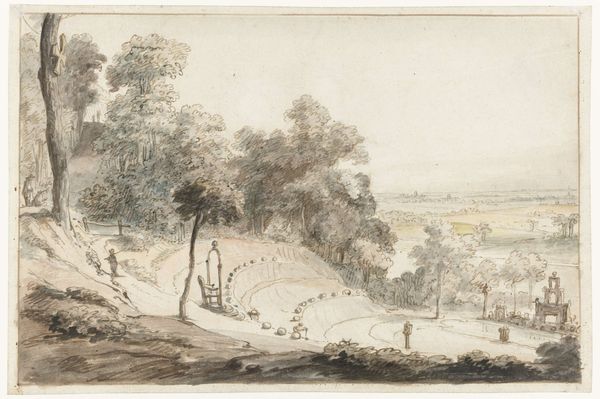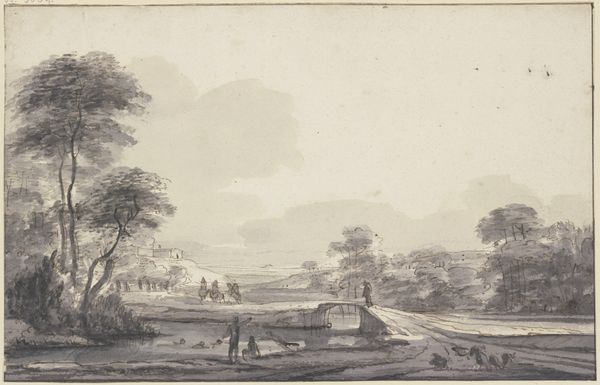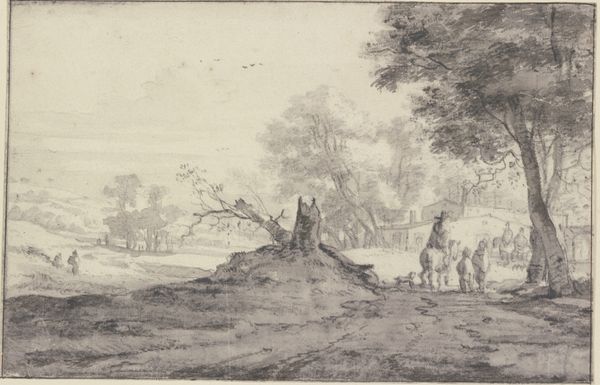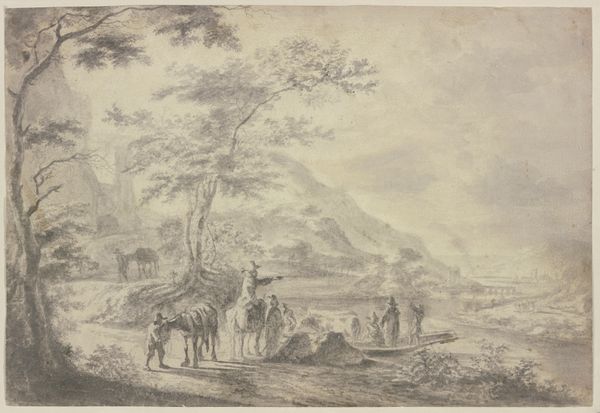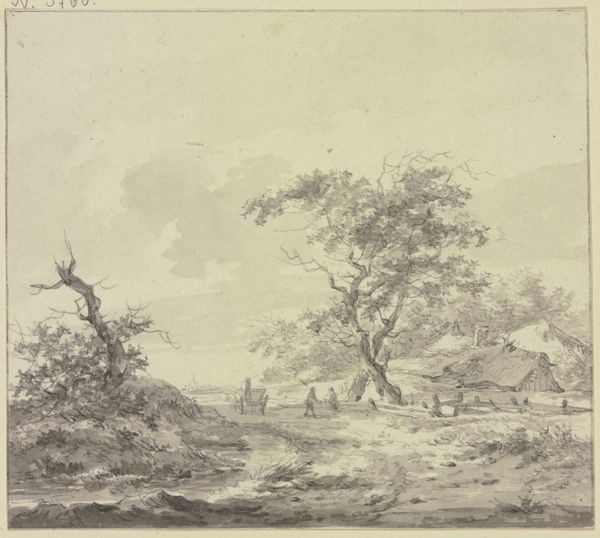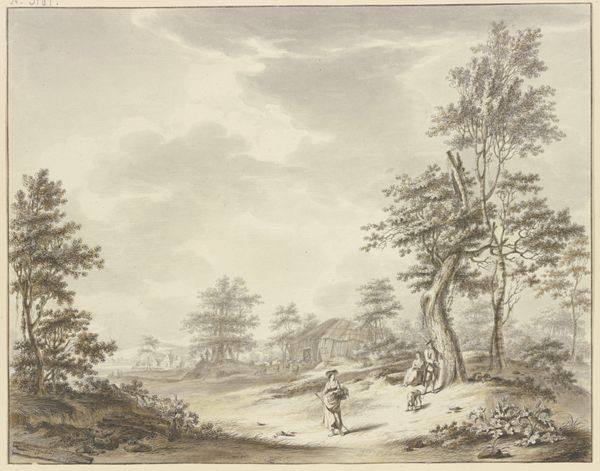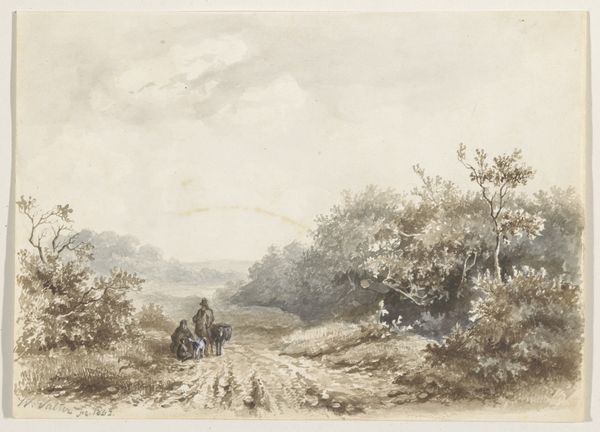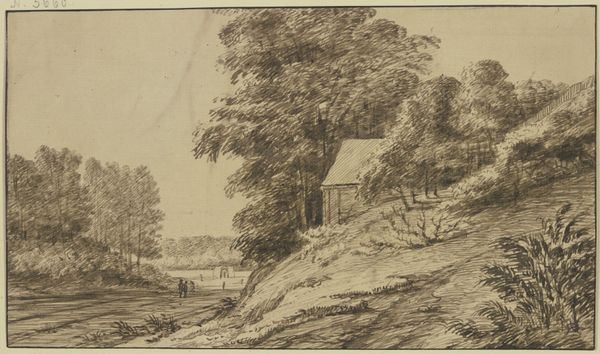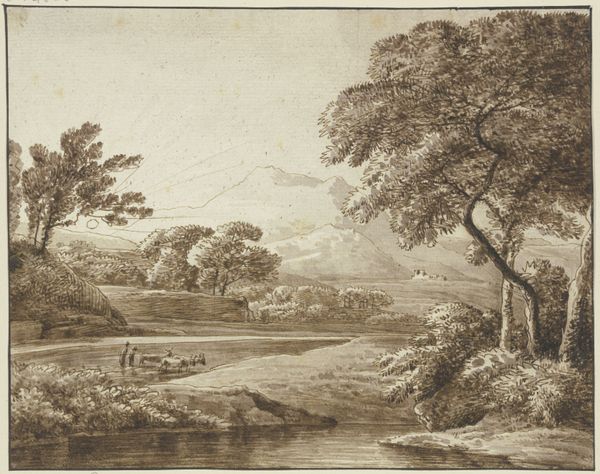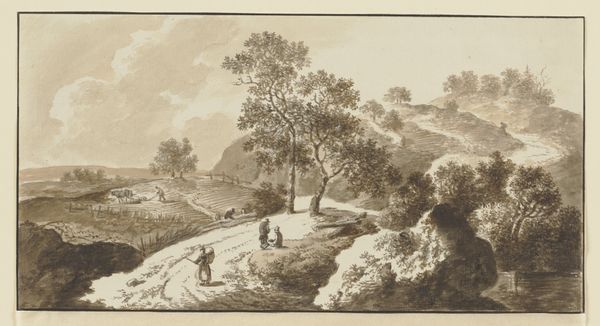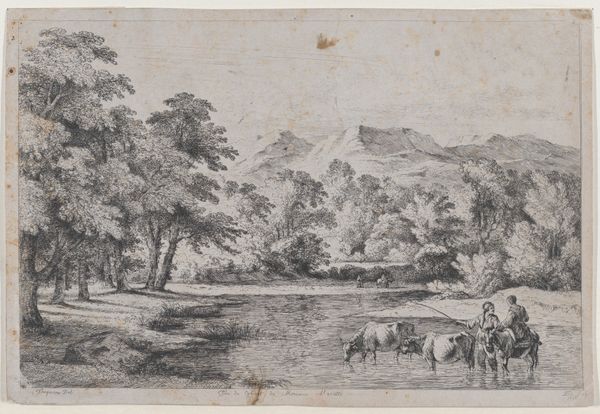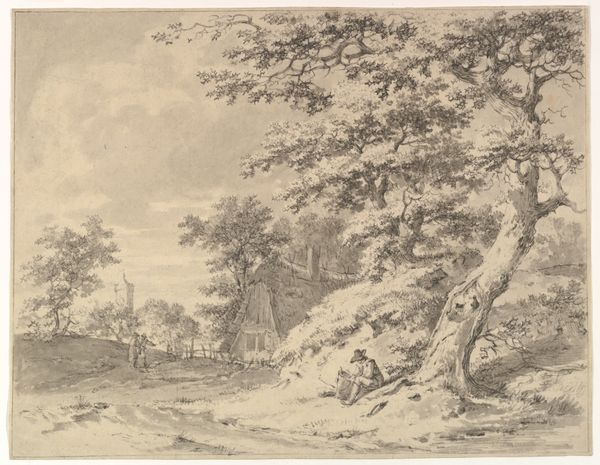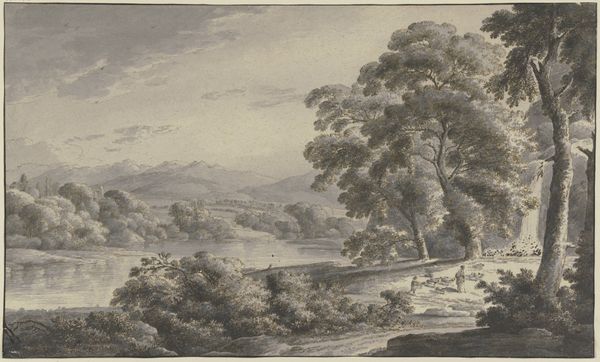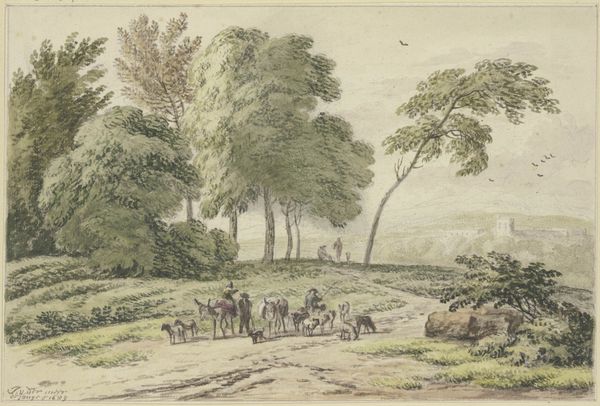
An einem Wasser vorbei über einen Hügel zieht sich ein mit einem Wagen, Reitern und Fußgängern belebter Weg
0:00
0:00
drawing, ink, pencil, pen
#
drawing
#
baroque
#
pencil sketch
#
landscape
#
charcoal drawing
#
ink
#
pencil drawing
#
pencil
#
14_17th-century
#
pen
#
watercolor
Copyright: Public Domain
Curator: Roelant Roghman's drawing, "An einem Wasser vorbei über einen Hügel zieht sich ein mit einem Wagen, Reitern und Fußgängern belebter Weg," translates to "A road bustling with a wagon, riders, and pedestrians passing water and crossing a hill." It’s currently held at the Städel Museum. Editor: It feels…fleeting. Captured in the moment. The monochrome washes of ink give it a dreamlike, ephemeral quality. I’m drawn to the light; how it models the trees and hints at reflections on the water. Curator: Roghman, active in the Dutch Golden Age, came from an artistic family. Landscape drawing provided a means of topographical recording but also a source of personal income that bypassed guild structures. He walked through the country extensively documenting landscapes which may reflect his personal political sentiments about rural life. Editor: There’s a structural clarity here, the way the composition leads the eye from the lower left, up and over the hill, toward the horizon. Even with so much implied detail, there's still a definite feeling of pictorial organization at play. What do you make of the relatively empty sky, for example? Curator: The unburdened sky lends itself to viewing figures that take on allegorical importance. Travel was hard during this period and each figure, each type of transport represented distinct economic strata within Dutch society and its evolving political climate. Also, the scale between people and landscape—it echoes a changing conception of humans' place within a growing industrialized landscape. Editor: That contrast is so prevalent—the density of the trees versus the openness of the water; it keeps the eye moving. And did Roghman use a quill for the delicate hatching and contour lines? It lends such definition, especially to the trees on the left. Curator: Likely. Think about who this work was likely intended for too, at the time. Not necessarily public consumption but more for an educated elite with an interest in not only the visual qualities, but social commentary and even a touch of social satire. Editor: Yes, it really does bring this otherwise serene landscape alive with untold societal tension. I won't be so quick to merely describe Roghman's use of line from now on. Curator: Agreed. Seeing the drawing through its historical and artistic production offers a different view than focusing merely on line, or composition.
Comments
No comments
Be the first to comment and join the conversation on the ultimate creative platform.
